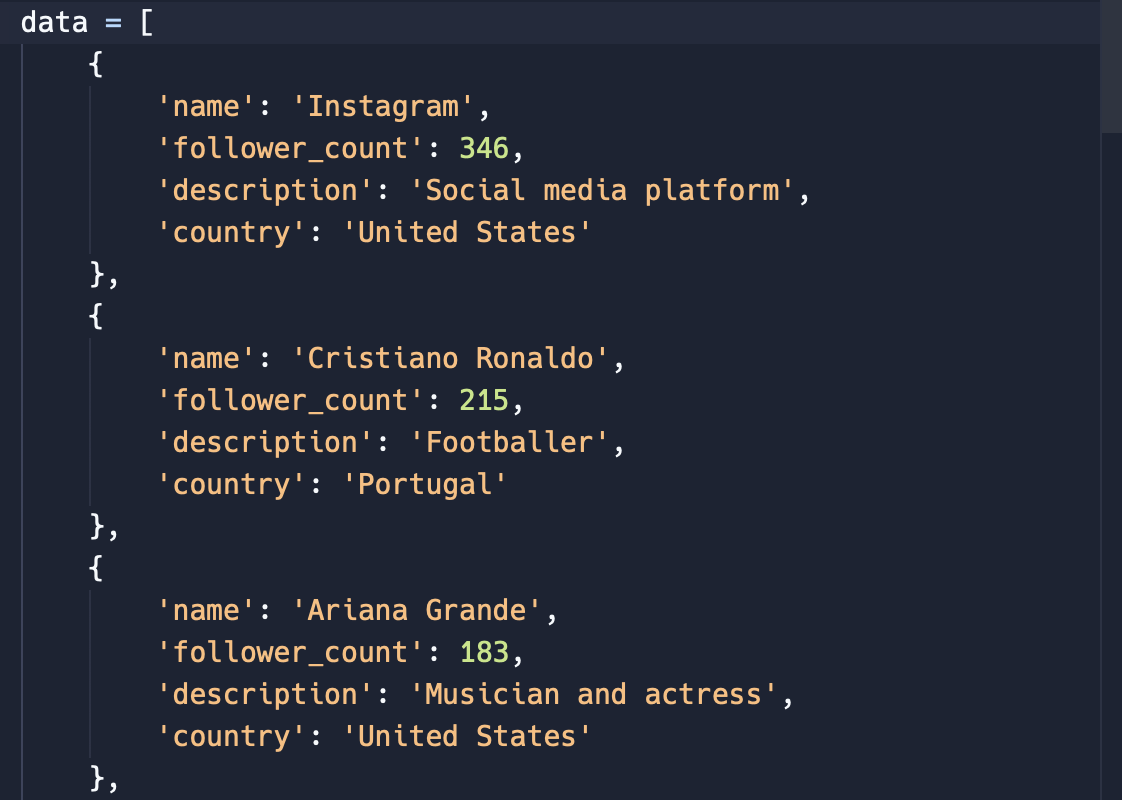If you have a list and you want to randomly choose an element from that list you can use, as I did, a complex or easy way.
Maybe you have a list with a nested dictionary with a celebrity’s name, number of followers, career, and country of origin.

One way to do this is by generating a random number using the random.randiant function. This function needs a range of numbers to create a random number within that range. To specify the range, you can use the len() function to calculate the total length of the list and use it as an upper limit. It will look something like this:

As a result, you can use the number as an index to go through the list and extract a single element:
Input:

Output:

But there is an easier way to get the same result: use random.choice instead. With this function, you can randomly choose an element from a list or string. Let’s see how it looks:
Input

Output:

As you can see, you got the same result, randomly pulling an item from a list with fewer features. Here is further details about the difference between random.randint and random.choice:
The random.randint and random.choice functions from Python’s random module are used for different purposes when working with random data. Here’s a breakdown of their differences:
random.randint
- Purpose: Generates a random integer within a specified range.
- Syntax:
random.randint(a, b)aandbare the inclusive lower and upper bounds of the range, respectively.
- Example Usage:

random.choice
- Purpose: Selects a random element from a non-empty sequence (like a list, tuple, or string).
- Syntax:
random.choice(seq)seqis the sequence from which you want to select a random element.
- Example Usage:

Key Differences
- Type of Output:
random.randint: Outputs a random integer.random.choice: Outputs a random element from a sequence.
- Input Parameters:
random.randint: Takes two integers, defining the range within which to generate a random number.random.choice: Takes a sequence (like a list, tuple, or string) from which to choose a random element.
- Use Cases:
random.randint: Useful when you need a random number within a specific range. For example, simulating a dice roll or generating random IDs.random.choice: Useful when you need a random element from a predefined set of values. For example, selecting a random item from a list of options or choosing a random character from a string.


Leave a Reply